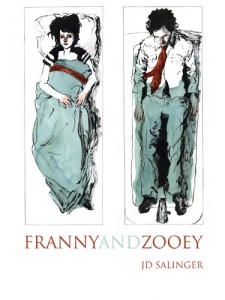Allie and Phoebe: Death and Love in J. D. Salinger’s The Catcher in the Rye by David Burrows
MLA Citation:
First Paragraph:
“Literary passions were not easily formed among America’s youth in the 1950’s. But during those years many students in high schools and colleges discovered, through J. D. Salinger’s The Catcher in the Rye, that “literature” did not mean the, to them, dull poetry and fiction of their text books. After the novel’s appearance in 1951, its fame began to spread by word-of-mouth, until something of an underground “Catcher cult” existed throughout the country. The speech mannerisms of Holden Caulfield, the book’s protagonist and narrator, were carefully imitated, and a generation of young Americans perceived through Holden the extent to which the world was divided between the “phonies” and the “nice” people, the former comprising the vast majority of the population. Then, in the late 1950’s, young college and high school teachers, themselves having been deeply affected by the book six or eight years earlier, introduced it formally into the classroom, and thus within a decade of its publication it reached the stature of an American “classic”.”
Continue reading “Allie and Phoebe: Death and Love in J. D. Salinger’s The Catcher in the Rye by David Burrows”
Reader’s Guide – “Zooey”
Publication Details

The New Yorker, May 4, 1957 pages 32-42, 44, 47-48, 50, 52,54,57-59, 62, 64, 67-68, 70, 73-74, 76-78, 80-82, 87-90, 92-96, 99-102, 105-106, 108-112, 115-122, 125-139 (original appearance). Later published by Little Brown as Franny and Zooey in 1961, and dedicated to William Shawn.
Character List
Frances Glass (“Franny”)
A 20 year old college student
Zachary Martin Glass (“Zooey”)
Zooey is 25 years old. He is considered one of the most attractive and successful of the Glass children. It is noted that he is a successful television actor.
Bessie Glass
Irish-born family matriarch. Bessie worries about her children who have all seemed to grow up almost by themselves after years of success on “It’s a Wise Child.”
Les Glass
The absent father, Les is more or less only mentioned in “Zooey.” He is of Jewish descent and he and Bessie were successful Vaudevillians
Buddy Glass
Buddy is the second-oldest of the Glass children, he teaches at a women’s college.
Seymour Glass
Seymour has been dead 13 years during the course of events that composes “Zooey.” Franny says she wants to talk to Seymour and that doing so is the only thing that will make her feel better.
Plot Synopsis
“Zooey” continues the story of Franny’s “spiritual awakening” on Monday, two days after Franny’s trip to Princeton. The novella also gives the reader additional information about the unusual upbringing of the Glass children, whose radio appearances as child geniuses, has created a unique bond among them. Salinger indicates even more in “Zooey” than in other Glass family stories that the Glass siblings have a unique understanding of one another based on this shared experience.
The narrative opens with Zooey, smoking and soaking in a hot bathtub, reading a four-year old letter from his brother, Buddy. The letter encourages Zooey to continue pursuing his acting career. Zooey’s mother, Bessie, enters the bathroom, and the two have a long discussion, wherein Bessie expresses her worries about Franny, whose existential anxiety seen in “Franny” has progressed to a state of emotional collapse. During the conversation, Zooey vacillates between a sort of tit-for-tat banter with his mother and a downright rude dismissal of her and repeatedly asks that she leave. Bessie accepts Zooey’s behavior, and quips that he’s becoming more and more like his brother Buddy.
After Bessie leaves, Zooey gets dressed and moves into the living room, where he finds Franny on the sofa with her cat Bloomberg, and begins speaking with her. After upsetting Franny by questioning her motives for reciting the “Jesus Prayer,” Zooey goes into Seymour and Buddy’s former bedroom and reads the back of their door, which is covered in philosophical and literary quotations. After contemplation, Zooey telephones Franny, pretending to be their brother Buddy. Franny eventually acknowledges the ruse, but she and Zooey continue to talk. Knowing that Franny reveres their oldest brother, Seymour – the spiritual leader of the family, who committed suicide years earlier – Zooey shares with her some words of wisdom that Seymour once gave him. At the end of the call, as the fundamental “secret” of Seymour’s advice is revealed, Franny seems, in a moment reminiscent of a mystical satori, to find profound existential illumination in what Zooey has told her.

